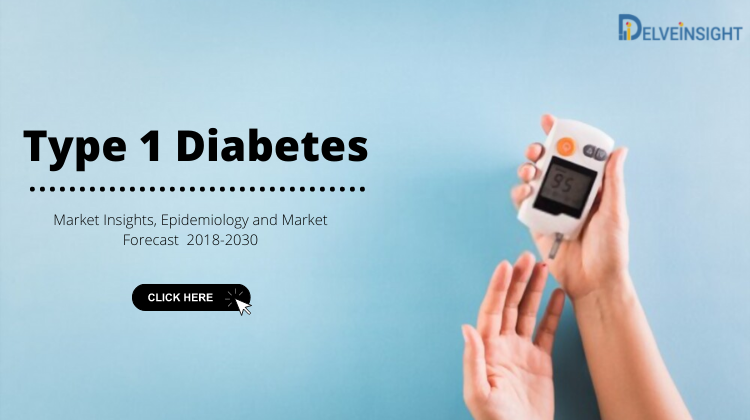What is Type 1 Diabetes?
- Yashveer Bhardwaj

- Aug 23, 2021
- 3 min read

Diabetes is a chronic metabolic condition characterized by high or low blood glucose (or blood sugar) levels, leading to significant damage to the heart, blood vessels, eyes, kidneys, and nerves over time. The rationale behind developing diabetes incorporates two factors: insufficient insulin production (produced by the pancreas and reduced blood glucose) or unsatisfactory cell response to insulin action.
Clinically, diabetes is classified into three types, type 1 diabetes (TD-1), Type 1 Diabetes (TD2), and gestation diabetes. TD1 is the consequence of an autoimmune reaction that causes the pancreas to suppress insulin-producing β-cells and leads to a severe insulin deficiency. TD2 is linked with a genetic factor, which is far more common and substantially correlates with obesity and unhealthy lifestyles. Insulin resistance (inadequate reaction of peripheral cells to insulin) and pancreatic β-cell dysfunction (impaired insulin secretion) are marked by Type 1 Diabetes, leading to relative insulin deficiency.
Type 1 diabetes is an autoimmune disorder, it is the most common type of diabetes among children, and however, type 1 diabetes can occur at any age. The typical symptoms of type 1 diabetes include excessive thirst, blurred vision, dry mouth, upset stomach and vomiting, bedwetting, frequent urination, unexplained weight loss, fatigue, labored breathing, lack of energy, and constant hunger. In patients having extreme type 1 diabetes, the symptoms include fruity odor to the breath, belly pain, and rapid breathing.
The cause of type 1 diabetes is unknown, however since it is an autoimmune disorder, wherein the body mistakenly attacks the insulin-producing (islet, or islets of Langerhans) cells in the pancreas, other causes include; genetics and exposure to viruses and other environmental factors.
The diagnostic procedure to confirm type 1 diabetes includes Glycated hemoglobin (A1C) test (> 6.5 on two separate tests, Random blood sugar test (> 200 mg/dL, along with symptoms of diabetes), Fasting blood sugar test(> 126 mg/dL on two separate tests). If the patient is diagnosed with diabetes, the doctor checks the presence of autoantibodies using blood tests.
Also, read- Type 1 Diabetes market size
Focusing on the chronic and severe nature of type 1 diabetes and type 2 diabetes, the treatment approach for them is quite comprehensive; regularization of glucose metabolism (continuous use of insulin) and control of risk factors are the key treatment targets for type 1 diabetes.
Living with type 1 diabetes remains a challenge for a child and the whole family, even in countries with access to multiple daily injections or an insulin pump, glucose monitoring, structured diabetes education and expert medical care. Besides the acute complications of hypoglycemia (abnormally low blood glucose) and DKA, poor metabolic control may lead to poor growth and the early onset of circulatory (or ‘vascular’) complications.
People with type 1 diabetes need to follow a different type of plan. A treatment plan, also called a diabetes management plan, helps people to manage their diabetes and stay healthy and active. Everyone's plan is different, and is based upon a person's health needs and the suggestions of the diabetes health care team.
The goal of the treatment is to keep your blood sugar level as close to normal as possible to delay or prevent complications. Generally, the goal is to keep the daytime blood sugar levels before meals between 80 and 130 mg/dL (4.44 to 7.2 mmol/L) and the after-meal numbers no higher than 180 mg/dL (10 mmol/L) two hours after eating.
Since type 1 diabetes arises in response to the complete inability of the pancreas to produce this essential hormone, you need to provide your body with supplemental insulin. Having enough insulin is critical because this hormone is responsible for helping to regulate your blood sugar and keep it in a healthy range—not too high (hyperglycemia) and not too low (hypoglycemia). It is advised to take insulin several times a day, including the time before and after the meal. Several types of insulin are available.
Each type starts to work at a different speed, known as “onset,” and its effects last a different length of time, known as “duration.” Most types of insulin reach a peak, which is when they have the strongest effect. Then the effects of the insulin wear off over the next few hours or so. Different types of insulin includes:
The Type 1 Diabetes market is anticipated to be driven in the coming years due to the rise in novel drugs and therapies and increased healthcare spending across the world. The high prevalence of the disease and participation of the key players like, Provention Bio, Oramed and Tolerion, etc., will influence the market dynamics.
Original Source:- Type 1 Diabetes Market Trends




Comments